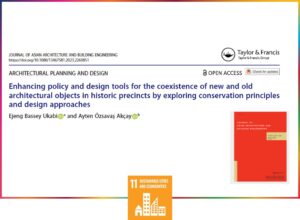
A collaborative study, involving a researcher Akçay from Near East University, delves into the nuanced relationship between new architectural designs and historic precincts, shedding light on the intricacies of conservation principles and design approaches. The research, aimed at developing policy and design tools for harmonizing old and new architecture within historic contexts, addresses a critical gap in understanding quality and relational aspects crucial to community perception.
Through discourse and content analysis, the study identifies a tendency among conservation agencies to prioritize quality indicators over relational factors in design, often resulting in an overemphasis on contextual-based designs. This imbalance can lead to disruptions in historic coherence and misapplications of design approaches, hindering the coexistence of new and old architecture.
To address these challenges, the study proposes innovative policy and design tools, including a six-ranking system for conservation principles, six novel design categories, and three hypotheses. These tools aim to provide designers, researchers, and urban planners with valuable guidance for navigating the complexities of historic precincts and making informed decisions.
The introduction of new design categories, such as indicative, reflective, and progressive, offers a nuanced framework for approaching historic preservation and revitalization. By considering the diverse typologies of design approaches and their compatibility with different historic precincts, the study advocates for a more flexible and holistic approach to conservation.
The findings underscore the importance of integrating quality and relationship aspects into the design process from the outset, highlighting the need for collaboration between regulatory authorities, architects, and other stakeholders. By fostering a dialogue between new and old architecture and adapting design approaches to the unique characteristics of each historic precinct, the study aims to promote vibrant and sustainable outcomes for future interventions.
The research represents a significant step towards enhancing the management of historic precincts and preserving their cultural heritage. By providing practical tools and insights, it empowers stakeholders to navigate the complexities of historic preservation with sensitivity and creativity, ultimately fostering a more inclusive and dynamic built environment.
More Information:
https://www.tandfonline.com/doi/epdf/10.1080/13467581.2023.2260851?needAccess=true